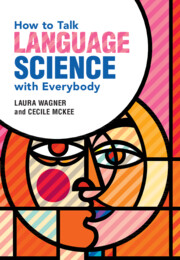Book contents
- How to Talk Language Science with Everybody
- How to Talk Language Science with Everybody
- Copyright page
- Contents
- Figures
- Preface
- Acknowledgments
- 1 Why Bother?
- 2 You Can Be the Expert
- 3 Cooperative Conversations
- 4 Conversational Goals
- 5 Know Your Audience
- 6 Creating Relevance by Generating Interest
- 7 Creating Relevance by Making Connections
- 8 Quality and Credibility
- 9 Quality vs Quantity
- 10 Learn to Listen
- 11 Information Structure
- 12 The Curse of Knowledge
- 13 Start with Examples
- 14 What’s New?
- 15 From Given to New
- 16 The Three-Legged Stool Approach
- 17 Working with a Range of Different Audiences
- 18 Where Can I Go?
- 19 Being a Good Partner
- 20 Finale
- Appendix Teaching with This Book
- References
- Index
7 - Creating Relevance by Making Connections
Published online by Cambridge University Press: 17 May 2023
- How to Talk Language Science with Everybody
- How to Talk Language Science with Everybody
- Copyright page
- Contents
- Figures
- Preface
- Acknowledgments
- 1 Why Bother?
- 2 You Can Be the Expert
- 3 Cooperative Conversations
- 4 Conversational Goals
- 5 Know Your Audience
- 6 Creating Relevance by Generating Interest
- 7 Creating Relevance by Making Connections
- 8 Quality and Credibility
- 9 Quality vs Quantity
- 10 Learn to Listen
- 11 Information Structure
- 12 The Curse of Knowledge
- 13 Start with Examples
- 14 What’s New?
- 15 From Given to New
- 16 The Three-Legged Stool Approach
- 17 Working with a Range of Different Audiences
- 18 Where Can I Go?
- 19 Being a Good Partner
- 20 Finale
- Appendix Teaching with This Book
- References
- Index
Summary
Emphasizing other people’s perspectives on the demonstrations that readers are developing, Chapter 7 opens by asking readers to imagine specific people who they might encounter in an informal learning setting and to reflect on why those people might care about their topic area and what they might already know about it. The chapter then reviews several examples of connections between language and broader, real-world experiences that many people are likely to have had. One of the advertising examples uses Bounty’s "quicker picker upper" phrase to show morphological processes. One of the cell phone examples uses mistakes in automatic speech recognition to show sociolinguistic comparisons across accents and genders. One of the popular song examples uses mondegreens (or misperceptions of lyrics such as Taylor Swift’s "lonely Starbucks lovers") to show phonotactic regularities. This chapter’s Closing Worksheet asks readers to write down specific ways that people might encounter their demonstration’s central topic in everyday life.
- Type
- Chapter
- Information
- How to Talk Language Science with Everybody , pp. 80 - 90Publisher: Cambridge University PressPrint publication year: 2023



